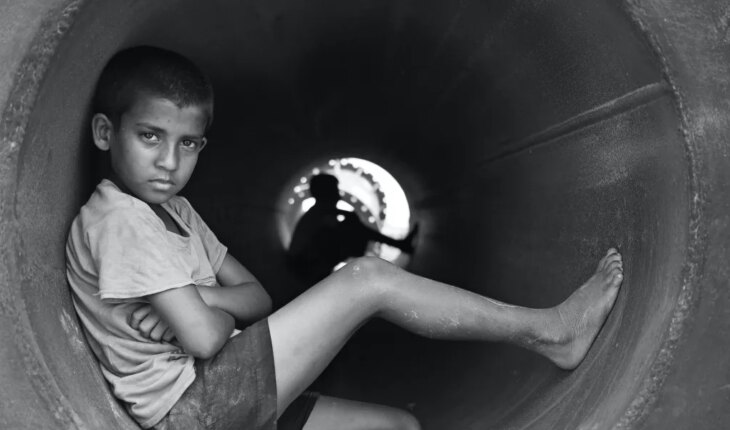“It is very difficult to adopt those children that we dream of but do not exist in reality. However, it is very easy to build a family with the number of children waiting for a home, “says Guillermo Sidoli, psychologist specializing in public policies of Childhood, Adolescence and Family and professor at the University of Buenos Aires (UBA). Between divided opinions on its effectiveness, long deadlines and challenges ranging from acceptance to bureaucratic complications, the adoption system in Argentina underwent a remarkable evolution. However, there is still a deep-rooted perception that this process involves a journey full of hairpin bends, insurmountable obstacles and an exhausting load. According to the latest data provided by UNICEF Argentina, there are around 2,200 children and adolescents in the country in a situation of adoptability. And about 2,500 families registered, waiting to be called by the court. But despite the fact that the figures are similar, young people, for the most part, go through an average of 3 to 4 years waiting for an answer. Which leads to the question of the situation: Where does the fault emerge? What is actually happening? The answer lies in society’s adoptive intentions. The figures reveal that from the age of 6, the chances of being adopted decrease by half, worsening from the age of 9 and almost disappearing from the age of 14.Historically, Argentine couples and families demonstrated a preference for adopting children in their earliest stage. “We have a misconception of adoption,” warns the professional. “92% of the applicants are registered in the registries to take into custody children from 0 to 2 years old, without any disease or pathology and without siblings,” explains Sidoli and continues: “This means that the community understands this process as a replacement of biological maternity and paternity, assuming the adoptive route as a parenthood without history.” A journey of challenges and hopesWhen it is identified that the rights of a child are at risk, the Council on the Rights of Children and Adolescents (CDNNyA) comes into action, which intervenes with the purpose of implementing a protection measure. The case is brought before the family court, from where the fate of the child comes under the responsibility of a judge. According to Law 114, it is the duty of the State to exhaust all available actions and options in order to restore the violated rights of the child. Once the 180 days have elapsed (a period that is usually not met), if it persists, the administrative body must make a decision on the future of the child: reintegrate him into his biological family or start the adoption process. “Each province has its own registry, where applicants who have registered with an adoptive will coinciding with the child’s profile are sought,” says the psychologist. And it is at this stage, when the malfunction of the judicial deadlines and the lack of correspondences with the registered adults begin to emotionally damage those involved. Overcoming emotional obstaclesThe adoption of children and adolescents is not without challenges. “Progressive autonomy, the first encounters and the need to establish new bonds of trust are a singularity of each young person who goes through an adoption process, and that will also have to do with their own history, identity and desires,” says Gabriel Lerner, National Secretary of Children, Adolescents and Family of the Nation. They go through traumatic experiences, and their adaptation to a new family environment may take longer. “Sometimes, adoption can take longer than expected or desired and even become a stressor or conflictive factor, so it must be addressed to minimize the impact of failed relationships,” he says. When children embark on the construction of that transcendental bond, which includes roles of maternity, paternity or sponsorship, in the first stage an initial feeling of enthusiasm can prevail. However, at a later stage, significant challenges often arise in which the dynamics with adults can lead to them being perceived as figures similar to others that the young person has had in his life, and that have not necessarily been relationships marked by love and care, but rather by abuse and neglect. The vital role of psychological supportFrom the moment a violation of their rights is identified, the process of treating those wounds begins. This happens from the very beginning, long before embarking on a path to adoption or guardianship. The “more meticulous and successful” the early approach, “More propitious will be the circumstances for a child or adolescent to immerse himself in an adoption process with greater tranquility, “according to the psychologist Sidoli.De according to the specialist, to address this problem it is necessary to consider two aspects. “One of them focuses specifically on the psychotherapeutic field, examining how certain parenting patterns involving maltreatment, violence, abandonment or abuse can give rise to psychopathological problems that demand a specialized approach, ranging from post-traumatic stress disorders to more serious cases, such as personality disorders,” he confirms. However, beyond this perspective, there is an intrinsic therapeutic process that is not carried out exclusively by therapists, and that is that of foster care. This modality of alternative care “implies that a family temporarily integrates a child or adolescent into its dynamics.” In Argentina, foster care has a significantly lower presence compared to the residential modality, that is, foster homes. According to UNICEF, 85 per cent of children in alternative care are in residential institutions. “What foster care provides is the experience of being part of the family dynamic. This process of individualization, where subjectivity is given to children within a family structure, is managed by a family that, although it is not theirs, creates the most appropriate conditions for healthy development, “says the professional. What prevents the greatest harm that institutionalization, despite not intending it, can cause. One of the main challenges facing the National Secretariat for Children, Adolescents and the Family (SENAF) is to improve coordinated work between the rights protection agencies, which care for children and adolescents, and the judiciary, which issue resolutions to advance an adoption project. “Although the norms recognize an active role of children’s agencies and clear deadlines for the issuance of resolutions, this is not happening in some judicial areas,” confirms Lerner.In the same line, he continues: “From SENAF working groups are held in each of the provinces to bring these parts closer and work more articulately, with the objective that each adolescent who so wishes, can be included in a new family”. In the event that the young person does not want to be adopted, since from the age of 10 they must have their consent, the Government develops programs to accompany them until their adult life.” There are adolescents who, for various reasons, decide on a process of autonomous discharge from care institutions. That is why, throughout the country, we develop the Accompaniment Program for Graduation, “he indicates and concludes: “Today we accompany more than 3000 adolescents and young people: 753 (from 13 to 17 years old) still remain in care devices, and 2,258 (18 years or older) already receive a monthly economic allowance (80% of a minimum living and mobile wage)”. It is essential to reconfigure our perception of children and adolescents, moving away from the stigma of problematic and embracing the vision of them as individuals in full development, full of potential and with much to give. Ignoring this perspective and the opportunity to forge strong family bonds makes finding applicants willing to embark on these forms of family building a considerable challenge. The adoption of teenagers in Argentina is not only transforming the trajectories of young people, but it is also shaping a new paradigm in our understanding of family and selfless love. As more homes open their doors to teens seeking refuge, the future looms with boundless promise and opportunity.
The endless wait of those who spend years without being adopted
August 6, 2023 |





